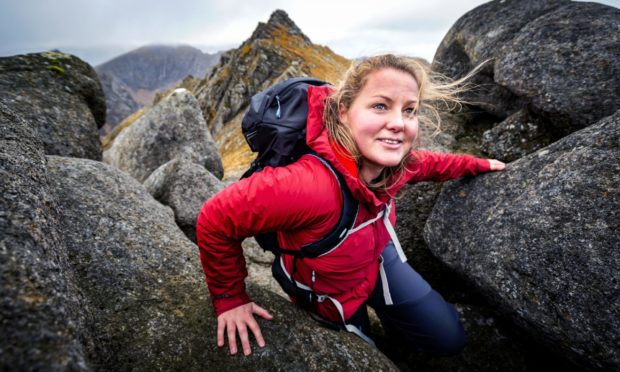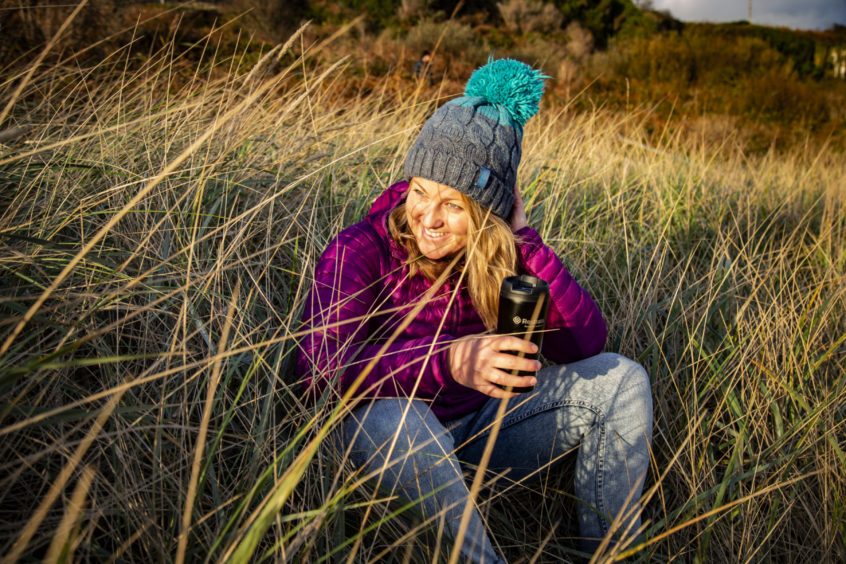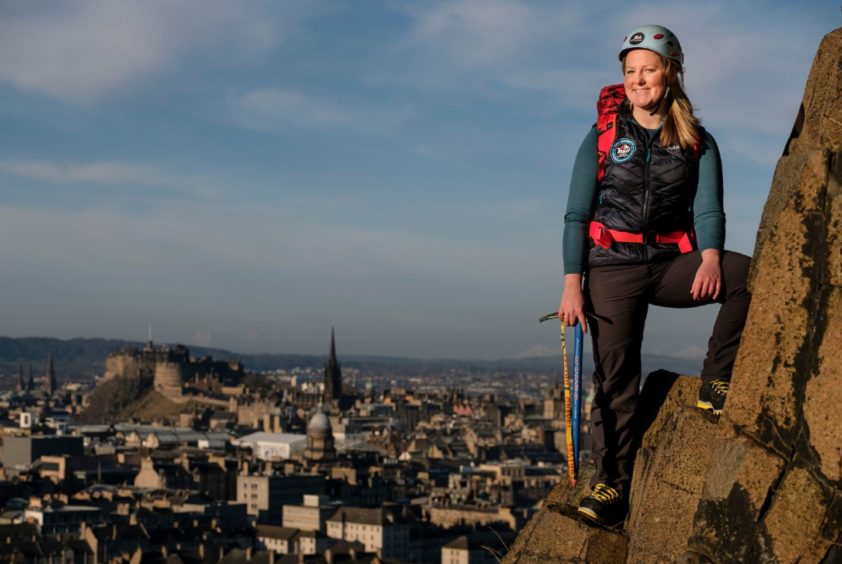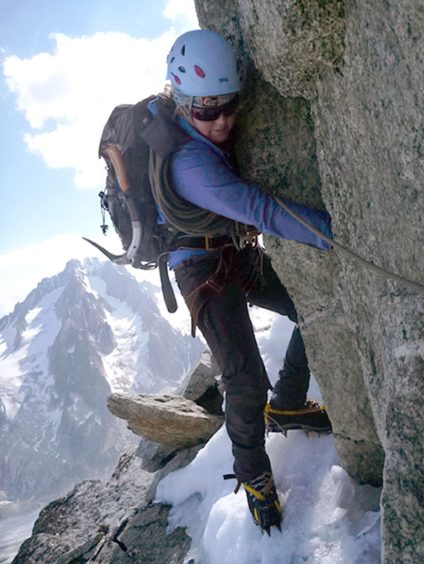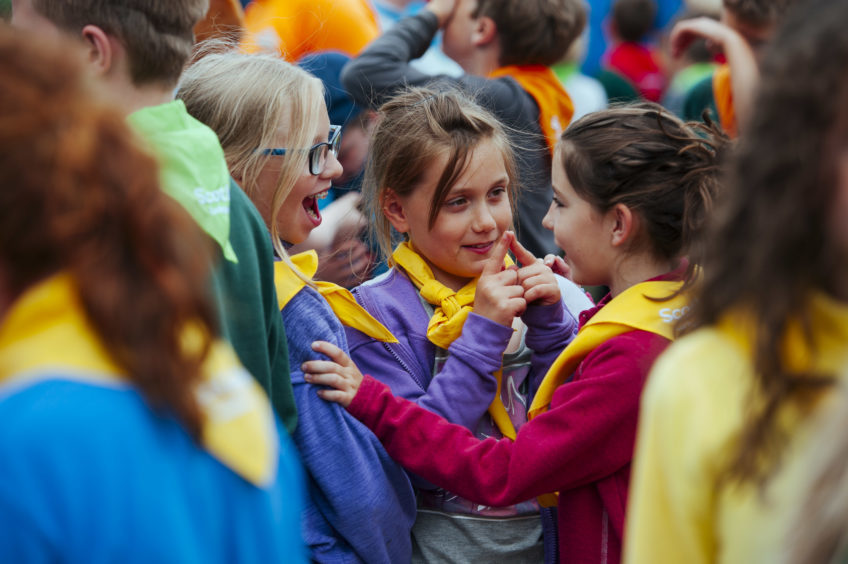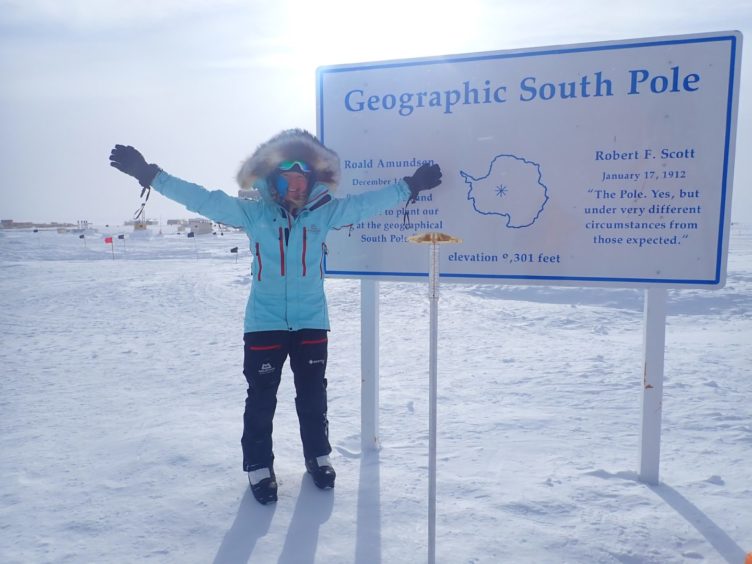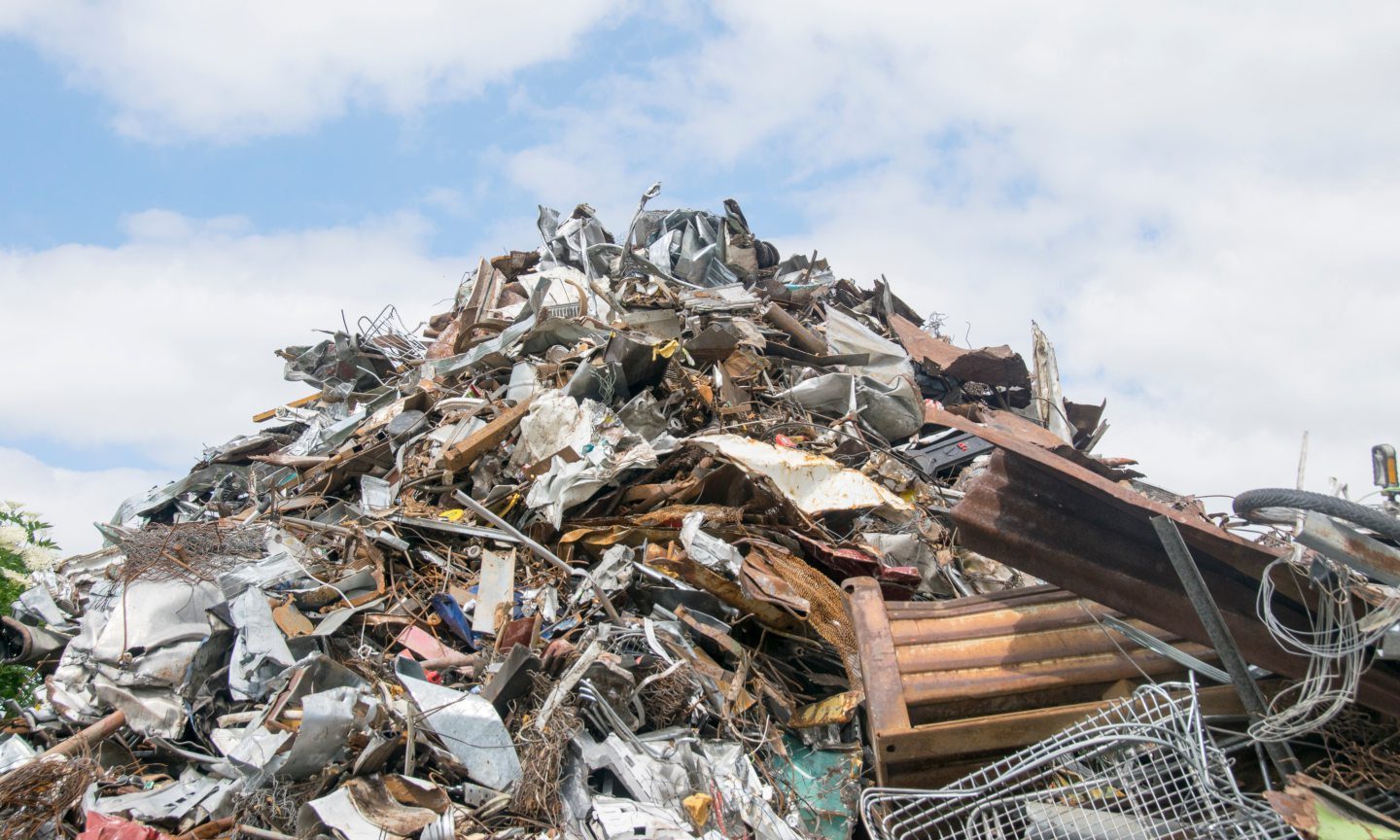Michael Alexander speaks to world record breaking explorer and recently appointed honorary president of Scouts Scotland Mollie Hughes who wants to inspire young people – especially girls – to build resilience.
If the average life expectancy in the UK is 81 years old, it means that if you are 16 you might have 65 years left on the planet. If you are 26, you might have just 55.
But whatever your age, what are you going to achieve with your remaining time on Earth?
It’s an analogy that’s been used by adventurer and world record holder Mollie Hughes when she gives motivational speeches to young people.
Mollie’s ambition was to stand on the highest point on Earth – the summit of Mount Everest – and realise there was nothing above her but the Earth’s atmosphere and then outer space.
She made this ambition a reality not once but twice before her 27th birthday – becoming the youngest woman in the world to successfully summit from both the south and north sides.
She followed this up by becoming the youngest woman in the world to ski solo from the coast of Antarctica to the South Pole.
After 58 days and 650 hours of skiing alone in whiteouts, storm-force winds and temperatures hitting minus 45C, Mollie reached the Geographic South Pole a year ago this weekend.
There’s no doubt these are remarkable world record achievements that required considerable planning, fundraising and resilience.
But the now 30-year-old insists there’s nothing extraordinary about achieving her goals.
She’s simply adjusted her mind-set to believe she can achieve something extraordinary.
She’s unlocked the “true extent” of her resilience and believes that absolutely anyone can achieve their goals if they learn how to focus and adapt.
Inspiring young people
Having recently been announced as the new president of Scouts Scotland – becoming the first woman to hold the voluntary position and taking over from Tiso Group CEO Chris Tiso – Mollie hopes to inspire even more young people, especially girls, to pursue their ambitions and to build their own resilience.
“I’m super-excited and honoured to get this position with Scouts Scotland,” says Mollie in an interview with The Courier from her home in Edinburgh.
“It’s a great honour to be the first female. I was really excited when they asked me.”
Growing up in Devon, Mollie didn’t join the Scouts as a youngster.
However, as the daughter of a kayak instructor, she enjoyed a “pretty outdoorsy life” next to the sea and Dartmoor, and did her Duke of Edinburgh Award.
In that part of the world there were, of course no mountains.
But it was through her membership of the Dorset Expedition Society – an organisation that takes young people on amazing expeditions – that she developed a taste for adventure.
“I didn’t climb my first mountain until I was 17,” she recalls.
“That was the turning point when my eyes finally opened to the world of mountains and adventure.
“I went on a trip with that organisation to Kenya in East Africa and climbed Mount Kenya. The hardest part was training and fundraising.
“It was such a great lesson for a young person to have to train for something and give focus and then to finally get there and feel like you’ve earned it.
“I just loved it and knew I wanted to climb more and more mountains.
“But I never imagined by the age of 30 I’d have managed to do the things I’ve done.”
Why climb Everest?
Mollie went to the University of the West of England in Bristol where she studied psychology and sports psychology.
She spent her student summers climbing in the likes of Kenya, the Indian Himalayas, the South American Andes and in the Alps.
However, it was when she decided to do her final year dissertation on the psychological experience of climbing Mount Everest, interviewing seven male climbers who had all reached the summit, that she became “completely inspired to have a go” climbing the world’s highest peak herself.
Having explored their motivation, their ability to control fear, the psychological pressures they faced and their experience of reaching the summit, she spent the next 12 months sponsorship hunting, increasing her mountaineering experience and undergoing serious physical training.
However, she was also spurred on after reading that a woman just two months older than her had made the trip.
At the beginning of April 2012 Mollie left the UK for her own attempt to summit Mount Everest, aged just 21 years old.
Part of an organised commercial expedition that took the route from the south side of the mountain via Nepal, Mollie climbed through the notorious Khumbu Icefall, the Western Cwn, scaled the Lhotse Face, camped at 7,900m on the South Col and after two incredibly challenging months reached the summit at 8am on May 19 2012.
She was accompanied by her friend and Sherpa guide Lhakpa Wongchu Sherpa who is from Pangboche in the Solukhumbu.
Interviewing the Everest veterans for her dissertation had certainly helped her prepare.
She learned that while these big expeditions are super physical, it’s “over 50% mental just to keep your head straight, not to get overwhelmed, to be able to stay relaxed, to not focus too much on the summit”.
“When I came home there was that element of ‘oh my god, I never want to climb a mountain again’, because it’s so hard,” she laughs.
“But after six or 12 months you do forget the pain and just remember how incredible it was. You then start to ask yourself – what am I going to do next?”
The second Everest climb
In 2017, three years after moving from London to Scotland to be closer to the mountains and coast, Mollie set off to climb Mount Everest for the second time.
But this expedition was from the colder, windier and more technical northern route, accompanied again by Sherpa Lhakpa Wongchu as well as Mollie’s friend and British mountain guide Jon Gupta and Lila Tamang.
“The south side the first time I went was incredibly hard,” she says.
“I suffered constantly. I managed to get to the top and I managed to get back down again in one piece, just about.
“But I never felt like I did it in a strong a style or I was that strong on it. There was half of me that wanted to go back and try and enjoy it a bit more.
“But I also felt like I’d only experienced half this mountain.
“I knew all about this northern route – the side where people were first climbing in the 1920s. I found it really intriguing. So I felt I had to go back and see it with my own eyes.”
The north side is much colder, much windier and climbers spend more time above 8000m in what’s called “the death zone”.
Here, the body deteriorates rapidly and the chance of helicopter rescue is slim.
Here, there’s also the ultimate psychological hurdle of the mountain looking bigger.
From base camp, the whole intimidating vista of the spectacular mountain towers above climbers while on the south side, the mountain is hidden behind a ridge line.
Yet the relative remoteness means the north side is a lot quieter – something Mollie enjoyed.
After six weeks acclimatising, gaining altitude on each rotation, stashing kit high on the mountain and getting prepared for their summit attempt, a small weather window appeared during the middle of May, when winds on the summit would die down just enough for them to reach the top and get back down again.
Mollie and her team headed up the mountain and after a short stop at camp three, located at 8,300m above sea level, they set off on their summit attempt at 8pm on May 15, 2017.
Following the north-east ridge, over the challenging first, second and third step, they went around the summit pyramid and onto the highest point on Earth at 4.45am on May 16.
Record breaker
Mollie became the first English woman to summit Everest from both the north and south sides as well as the youngest woman ever to achieve this at the age of 26.
Looking back, however, the trip Mollie is now even prouder of is becoming the youngest woman in the world to ski solo from the coast of Antarctica to the South Pole – taking the world record from previous holder, Vilborg Gissuradottir from Iceland, who had completed the challenge in 2013 when she was 32.
South Pole trek
Mollie reached the pole on January 10 2020 after eight challenging weeks and 650 hours of skiing and pulling a 105kg sled alone in whiteouts, storm-force winds and temperatures hitting minus 45C.
“I’m incredibly proud of that trip even more so than any of my Everest expeditions,” she says, reflecting on how, to sustain her energy levels, she consumed around 4,500kcal per day, more than twice the average daily amount for a woman, with favourites including Snickers bars and freeze-dried spaghetti bolognese, which she consumed on Christmas Day.
“I think it probably was harder – digging deep on the self there.”
She admits there were moments early on when she thought she’d bitten off too much.
“Almost as soon as the trip started I got hit by a really big weather front and spent eight days in a storm – whiteout conditions, strong winds and really cold temperatures down to minus 45,” she says.
“I’m thinking ‘what on Earth am I doing here?’ I definitely felt like I’d bitten off more than I could chew.
“But when the storm finally passed, there was a realisation you can be in control here.
“Even though it’s a wild environment if you know your stuff and you are careful and incredibly sensible you can be ok.”
Scouts Scotland role
It’s apt then that ‘Be Prepared’ is the Scouts motto.
And as well as being a role model for young people, it’s the mental health as well as the physical health benefits of the outdoors that Mollie is keen to promote – especially after a year that’s seen peoples’ movements curtailed by the Covid pandemic.
“So many of us – all of us – have realised how much we need the outdoors,” she says.
“When it’s kind of taken away from you like during the bad lockdown in the spring, when you have that hour or so for exercise, you realise the importance of getting outside and connecting with nature and connecting with the natural world.”
Mollie says the more incredible places she’s visited in the world, the more humbled she’s felt by their presence.
It’s opened her eyes to the climate crisis. That’s one way she wants to engage with young people through the Scouts.
By getting them into the outdoors and giving them a love and appreciation of nature, they are more likely to want to protect it.
But people don’t have to visit the Himalayas to achieve the same feeling.
It can be experienced in Scotland whether that’s in the mountains, at the beach or in the local environment.
Mollie says it’s been frustrating not being able to travel to the mountains due to Covid restrictions.
Hard as it is, however, being patient and understanding is a small price to pay if it helps saves the lives of vulnerable people.
“I’ll give up a few mountains for that,” she smiles, adding that she wants to spend a lot more time sharing her experiences with young people.
“But I’m feeling hopeful as well for 2021. I think it’s going to be a much better year for all of us.”
*For more information about Mollie Hughes and Scouts Scotland go to http://molliehughes.co.uk/ and https://www.scouts.scot/
